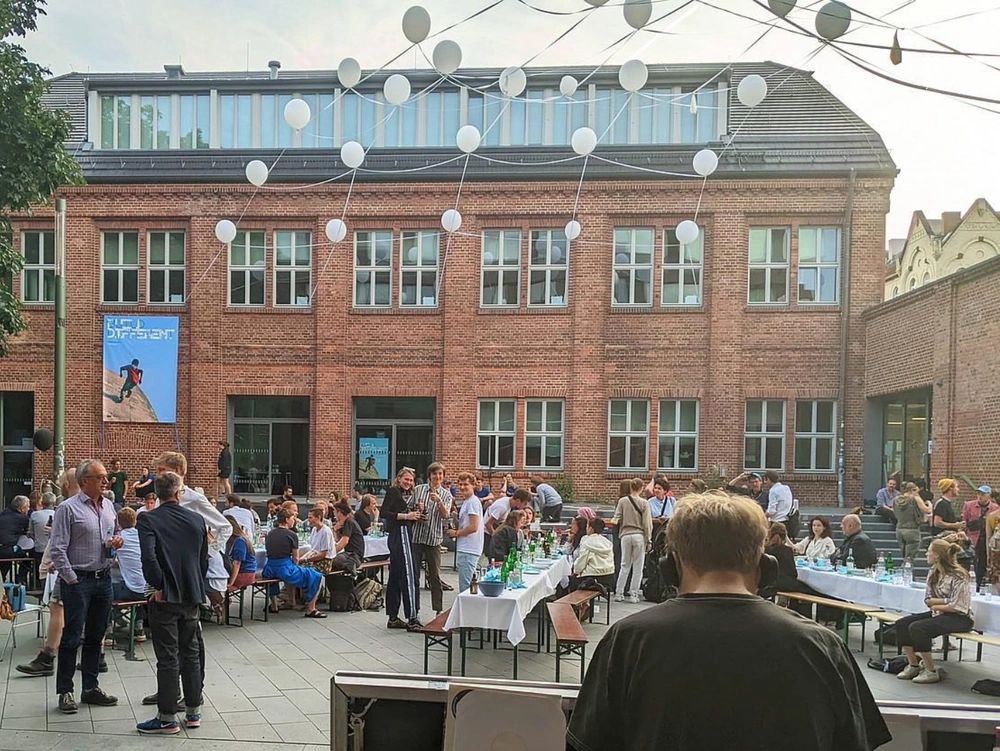Build Different

The project “Build Different” had innumerable touchpoints: circular economies, the common good, the climate crisis, the rise of the digital, and how almost all domains of architecture are being redefined. We will have to build differently. But what does “different” architecture look like? Which production models does it follow and how do we make them common practice? Almost all domains of architecture are being redefined—by changing (circular) economies, the common good, climate change, and the rise of the digital. What does that redefinition look like, and how will it transform the discipline of architecture and its institutions? How do narratives about architecture shift? The conference addressed these questions and what these changes mean for architecture. Martien de Vletter, associate director Collection, will speak about how these questions are reshaping the narrative of the institution in a panel discussion alongside Pirjo Sanaksenaho (New Museum of Architecture and Design, Helsinki) and Pippo Ciorra (MAXXI, Rome). The event took place at Universität Kassel before the opening of Documenta XV.
The diverse participants' background enabled them to focus on ten different aspects of sustainability described below. Kvadrato is a group of architecture editors from different publications who came together to explore ways to break down the barriers of formal architecture communication. The group will aim to kick off a series of fruitful discussions on the practices, processes and experiences of architecture, its many actors and how to frame them. Kvadrato means place (or square) in Esperanto. Kvadrato was founded by Christian Burkhard editor-in-chief at Architectuul, Francesco degl’Innocenti, editor at Volume, and Giulia Ricci, editor at Domus. It was coordinated by Bostjan Bugaric, senior editor at Architectuul. Version 1.0 was developed in collaboration with Berta Gutiérrez, Christina Serifi and Alkistis Thomidou. Version 2.0 was produced and managed by Quest (Christian Burkhard & Florian Köhl).
Topics and participants
Economics (Add, transform, reuse)
Excessive requirements for profitability and regulatory limits lead to a construction industry which focuses on quantitative issues, while spatial quality and thus quality of life fall by the wayside. However architecture is predestined to create space and lay the foundation for positive economic developments. How can it be enabled? With Jean-Philippe Vassal (Lacaton & Vassal), Andreas Hofer (IBA Stuttgart),Andreas Krüger (Belius), Laura Weißmüller(Süddeutsche Zeitung), Cristina Gamboa (Lacol, Arquitectura Cooperativa)
Materials (More (can) must become less)
The climate footprint of the construction industry is devastating. In view of the increasing demand for new living space, construction is in a quandary. More construction means more pollution. Can circular building really be the answer? And how do we deal with the existing? With Belinda Tato (Ecosistema Urbano), Philipp Misselwitz (Bauhaus Earth).
Dissemination (Do you speak Architecture?)
Institutions in the twenty-first century. Architecture institutions are changing. To address the public today they need new tools, new narratives and sometimes also new buildings. Very different institutions have to deal with these manifold challenges and thus shape the future of the architectural discourse. With Pirjo Sanaksenaho (New Museum of Architecture and Design, Finland), Pippo Ciorra (MAXXI, Rome), Martien de Vletter (CCA, Montreal).
Thursday Evening
We were all cooking together on the campus of the university accompanied by stories about architecture with Niklas Maak (Frankfurter Allgemeine), Benjamin Foerster-Baldenius (raumlabor berlin).
Public space (Can we come in?)
How we live together is defined by encounters in public space. The accessibility and openness of spaces that enable such encounters must be ensured on a broad level. This happens when spatial, social and content-related elements of spatial formation are negotiated together and intertwine in the long term. With Silvia Casoran Martos (Barcelona City Council), Stefano Ragazzo(AMAT)
Campaigns (Built utopias want to be lived)
If we want to build differently, we need instruments to convey our ideas, we need to inform about the potential that architecture holds in order to convince and involve the public. When the value of spatial creation is not brought to the front, it risks to cease to exist. With Silke Neumann (Bureau N), Davide Tommaso Ferrando, Daniel Munteanu (Unfolding Pavilion), Benjamin Foerster-Baldenius (raumlabor berlin)
City and countryside (Inner city country outings)
City centres are becoming hotter and hotter as a result of climate change. Cooling, if at all possible, is associated with great costs. There is no alternative to gradual unsealing and intensive greening. Due to new transport infrastructures and changed working conditions, life in the countryside could experience a new purpose. With Gudrun Sack (Tegel Projekt GmbH), Ferdinand Ludwig(Technische Universität München), Sébastien Marot
Commission and use (On behalf of use)
The use of built and open spaces is at the centre of spatial creation. How use can develop in interaction with planning and which commissioning, organisational and operating models are necessary to harmonise architecture and use is increasingly the subject of new forms of architectural planning. With Elena Schütz (Something Fantastic), Gideon Boie (BAVO),Ahmed Belkhodja (Atelier Fala), Andreas Foidl (Belius)
Friday Evening (First Aid + Infraturm)
We met for an after event at the Documenta XV opening of the exhibition First Aid. at Hugenottenhaus in the city centre. The Infraturm, a tower built by students of University Kassel in the garden of the venus was presented to the public for the first time. With First Aid (Silvia and Lutz Freyer) and Infraturm (FG Entwerfen + Gebäudelehre, Prof. Marie-Therese Harnoncourt-Fuchs) at Hugenottenhaus, Friedrichsstraße 25, 34117 Kassel
Digital space (Immaterial: The future of space)
We inhabit three spaces, the physical, the mental and the digital. We jump into and out of these three, constantly making one percolate through to the next. Boundaries become blurry. Neural networks gain physical agency. We explore these new realms digitally – with a web app whose innovative interface has already won it a Grimme Award. With Leonardo Dellanoce (Digital Earth), Leo Stuckardt (MVRDV)